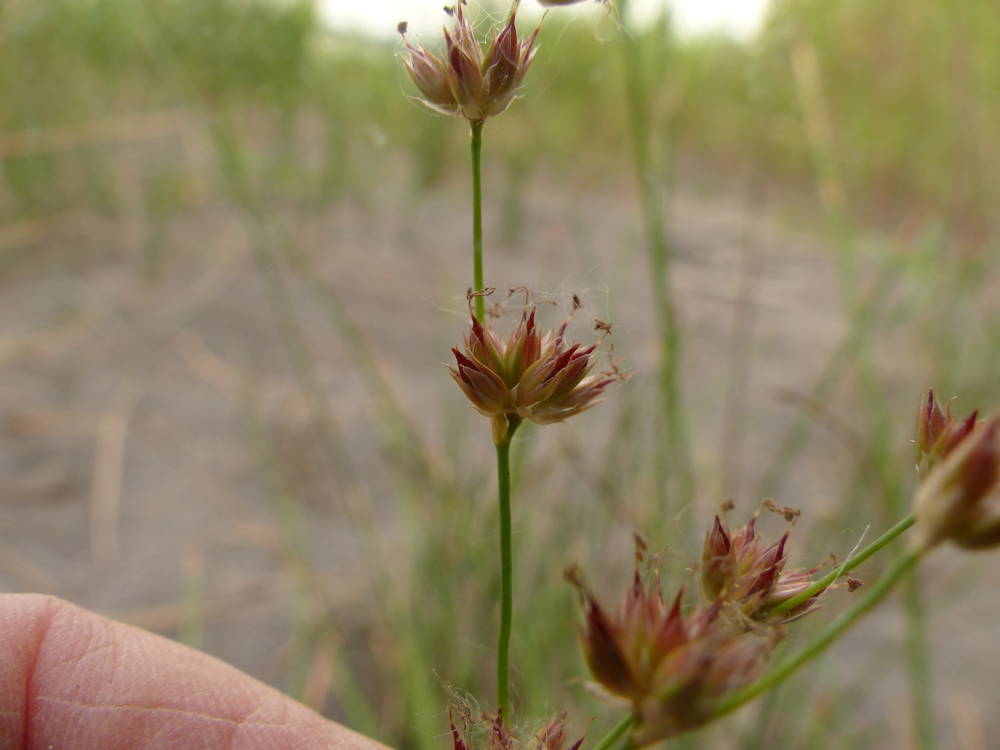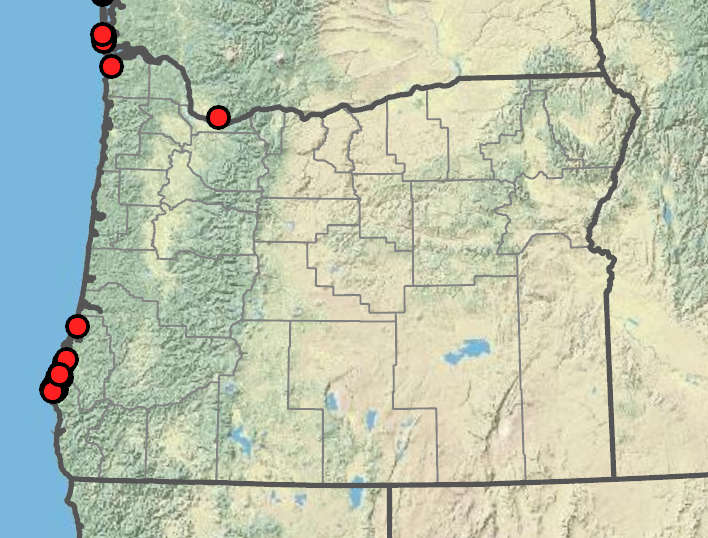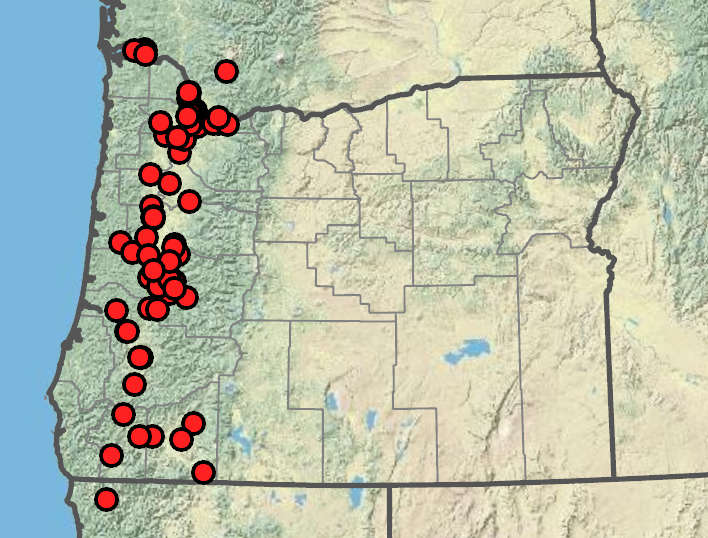Juncus canadensis
Juncus oxymeris
Canada rush, Canadian rush
pointed rush
basal and cauline; round; hollow, septate, 1–2 mm wide;
auricles 1–1.2 mm.
flat; iris-like, blue-green, partially septate;
auricles absent.
panicles of 3–50 clusters; clusters 5–50-flowered, not obscured by inflorescence bract.
10–70 clusters; clusters (2)3–7(11)-flowered.
tepals 6, green; reddish, or pale brown;
tips acuminate;
stamens 3;
filaments 0.8–1.5 mm;
anthers 0.3–0.5 mm;
styles 0.2–0.3 mm.
tepals 6, green to pale brown, usually red-tipped;
stamens 6;
filaments 0.5–0.8 mm;
anthers 0.7–1.6 mm;
styles 0.4–1 mm.
usually 0–1 mm longer than the tepals, dark brown, 1-chambered.
longer than the tepals, brown to dark red, usually gradually tapered to long acuminate tip, 1-chambered.
narrowly ellipsoid to linear, 1.25–1.9 × 0.2–0.25 mm;
bodies 0.5– 0.8 mm; tails 0.3–0.5 mm, 0.5–1 times as long as seed body.
0.4–0.5 × 0.2–0.25 mm, apiculate, reticulate.
=80.
Juncus canadensis
Juncus oxymeris
Shores, ponds, peatlands, disturbed sandy acidic wet ground, cranberry farms, ditches. 0–100 m. Est. WA; north to British Columbia; eastern North America; Europe, New Zealand. Exotic.
This species was introduced by cranberry agriculture and is spreading into natural wetlands. Some authors suggest rare flowers have 6 stamens.
Shores, swales, marshes, wet meadows, fresh water intertidal. 0–700m. Casc, CR, Sisk, WV. CA, WA; north to British Columbia. Native.
Peter Zika
Peter Zika
- Local floras:
BC,
OR,
WA
- Local Web sites:
Flora NW,
PNW Herbaria
WildflowerSearch
iNaturalist (observations)
USDA Plants Database
- LBJ Wildflower Center
- SEINet
- Plants of the World Online
- Encyclopedia of Life
- Wikipedia
- Google Image Search
- Local floras:
BC,
CA,
OR,
WA
- Local Web sites:
CalFlora,
CalPhotos,
Flora NW,
PNW Herbaria
WildflowerSearch
iNaturalist (observations)
USDA Plants Database
- LBJ Wildflower Center
- SEINet
- Plants of the World Online
- Encyclopedia of Life
- Wikipedia
- Google Image Search


